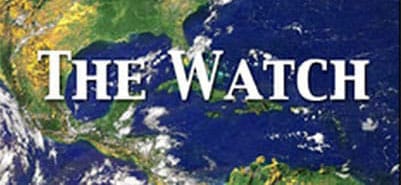Water Water Everywhere Will There Be Enough to Drink?
Of the climate change research found in accredited journals, 97.4% of scientists agree our atmosphere is warming and that humans are the main cause of it. As such, it's important to understand that in the scientific community there is no longer a discussion of this fact. The question then arises as to the magnitude of the warming we're facing, what changes we’ll we see in the world's weather and how those changes will affect the world's population.
The evidence of climate change is compelling. In our lifetime we are seeing sea levels rise, global temperature increasing, oceans warming, ice sheets shrinking, a decline of arctic sea ice, the retreat of glaciers, an increase in intense weather events, ocean acidification, and the decline of snowpacks.
In this discussion, Brian addresses the predicted and observed impacts of a warming climate to water resources globally, and then regionally within the United States. In the US we can expect areas that receive the majority of their water supply from spring snowmelt runoff to transition to a rain driven hydrology. Areas that were once snow covered mountains, we can expect to receive rainfall during the cold season. Additionally, we'll see a change in precipitation patterns affecting vast majorities of the population. This includes increased storm and rainfall intensity, more extensive and prolonged droughts, and a long term change in precipitation patterns.
With these changes in our future, how will we adapt? In fact, can we change the rate and magnitude of our warming? What can one person do to alter our future?

Brian McInerney is the Senior Hydrologist with the National Weather Service Forecast Office in Salt Lake City, Utah. He has held this position in some capacity for over 27 years. He has a masters degree in Forest Hydrology from the University of Montana, and an undergraduate degree from St. Mary's University in Winona, Minnesota. His duties with the National Weather Service include overseeing the water supply, climate, climate change, flood, and flash flood programs for most of Utah. He has been providing climate change information and hydrologic forecasts since the early 90's, and has seen Utah's hydrology regime slowly evolve due to the warming climate. He is frequently asked to speak at conferences throughout the state on the subject of climate change and it's effect on Utah's snowpack and overall water supply.
He originally hails from Chicago, Illinois, and currently resides in Park City, Utah.
Education
Webinar Archives Education ResourcesStewardship
Supporting Stewardship Past Projects Focus Area Resources Applying for Funding
Search Education
Get Social
Last updated: 06/16/24
Author: NOAA
How to cite this article
